7 Best Scopes For 17 HMR Rifles in 2024 – Reviews & Top Picks
Last Updated on
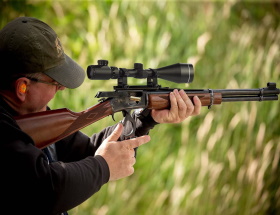
Some people believe investing in a scope is a waste of time and money, simply because it weighs down the .17 HMR rifle. But, that’s not true. The benefits of using a scope are innumerable, and exactly what you might to improve your marksmanship.
It will increase your accuracy, improve your self-confidence, make you feel safer, easier to shoot targets that are farther away, and will even offer extra comfort.
And that brings us to today’s write-up. We’ll be helping users that have invested in a scoreboard get to the top of their game, by answering the question of what’s the best optical sighting device for .17 HMR rifle for this year. So, let’s stop lollygagging and get to it.

A Quick Comparison of our Favorites
| Image | Product | Details | ||
|---|---|---|---|---|
| Best Overall |
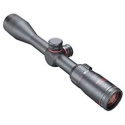 |
Simmons Whitetail Riflescope |
|
CHECK PRICE |
| Best Value |
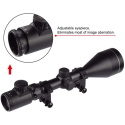 |
OTW 3-9X56 Rifle Scope |
|
CHECK PRICE |
| Premium Choice |
 |
Hawke Vantage IR 4-12x40 AO Riflescope |
|
CHECK PRICE |
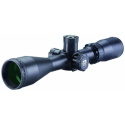 |
BSA 3-12X40 Sweet 17 Rifle Scope |
|
CHECK PRICE | |
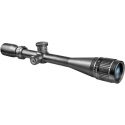 |
BARSKA 6-18x40 mm AO Hot Magnum |
|
CHECK PRICE |
The 7 Best Scopes For 17 HMR Rifles
1. Simmons Whitetail Riflescope – Best Overall
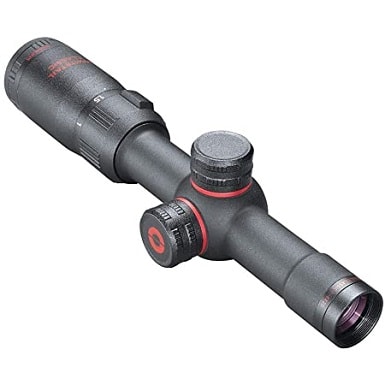
The Simmons Whitetail Riflescope is the answer to those hunters or shooters looking for an optical sighting device that will be by their side 24/7. Taking into consideration its textured surface and rugged construction, we’re pretty sure this bad boy is all you need to show everybody what you’re capable of doing, without second-guessing yourself.
For starters, it’s an adjustable scope that comes with a power range of 6-24x. And that’s all the information you need to figure out whether it can be relied on for mid to long-range shooting. In addition, making adjustments without losing focus is easy, as the magnification ring is large and not stiff at all.
In its circuitry, you’ll find a 50mm diameter objective lens. It’s tasked with reducing light reflection, facilitating transmission, and producing well-differentiated imagery. And to eliminate the issue of fringing from the edges, Simmons applied several coatings on all the air to glass surfaces—including the hydroshield coating, a fully multi-coated optic notoriously known for dealing with fog.
The sight comes with a truplex reticle. It’s the basic duplex type, so you’ll still feel at ease while focusing and be able to deliver accurate shots. The eye relief is generous enough to allow the user to stand in a comfortable position without having to squint their eyes too much.
You’ll definitely appreciate the fact that this 1-inch tube is hard-wearing, and will never throw in the towel to continuous recoil. To top that off, it’s one of the few scopes that usually perform exceptionally well when exposed to shock or submerged in water.
The only thing that would make us not buy this ¼ windage and elevation adjusted scope is the knobs. They move without any audible clicks.
- Textured surface and rugged construction
- Magnification ring is large
- Power range of 6-24x
- 50mm diameter objective lens
- 1-inch tube diameter
- Waterproof and shockproof
- Generous eye relief
- Truplex reticle
- Fully multi-coated optic
- ¼ windage and elevation click value increments
- Inaudible turret clicks
2. OTW 3-9X56 Rifle Scope– Best Value

Even though the Simmons Whitetail Riflescope still has an edge over the OTW 3-9X56 Rifle Scope, it’s still the best scope for a 17 HMR rifle for the money. First off, given its 3-9x magnification, you don’t have to be told it’s versatile in nature. And its focus is perfectly designed for close targeting to mid-range focus.
OTW obviously did its homework, as we could tell the scope’s system is well equipped to guarantee appreciable clarity and reticle. It made targeting quicker, precise, and a lot easier. Moreover, it comes with a 5-brightness intensity level feature that’s both green and red. The green is supposed to enhance visibility using the day, while the red targets low light conditions.
Add that to the illuminating reticle, and we have ourselves a sighting device that offers a precise signal at different brightness levels.
The sturdy construction scope also has a flip-up cap that will protect your scope during transportation or storage. Come to think of it, that cap could be the reason why you’ll never have to worry about moisture covering the lens, or dust build-up.
The clear contrasted images are the results of the multiple coatings applied on the lenses, so nobody should lie to you that “fully-multi-coated lenses” are just words used to sell the product.
To maintain accuracy, the scope was designed to lock the external turrets. And it can withstand all weather conditions, making it fog-proof and waterproof. The weaver rail rings provide stability, and the recoil proof performance is credited to aluminum.
Unfortunately, the device doesn’t sight in. This was a huge problem and the reason we placed it second on this list. However, for the money, this is the best scope for 17 HMR rifles available this year.
- Offers value for money
- 3-9x magnification
- 5 different brightness levels
- Green & Red Illuminating reticle
- Has a flip-up cap
- Sturdy construction
- Fully-multi-coated lenses
- Fog-proof and waterproof
- Recoil proof performance
- Doesn’t sight in
3. Hawke Vantage IR 4-12×40 AO Riflescope– Premium Choice
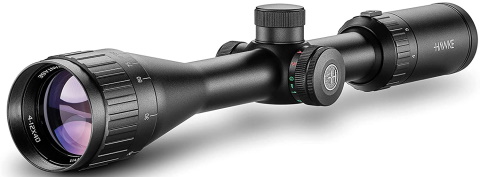
The Hawke Vantage IR 4-12×40 AO Riflescope is ridiculously expensive, but better than decent. And that’s what we love about it. The glass used in this aircraft-grade aluminum construction is not just good, but great. It’s FMC (fully multi-coated), so you know it has what it takes to deliver an incredible edge-to-edge clarity even in a low light condition.
From the description, you can tell the objective lens diameter is 40mm. Big enough to allow in more light, but not too much to blind the guy behind the scope.
It’s also adjustable, incidentally. Adjustable objective lenses are responsible for focusing the sighting device, so that it can be free of parallax at various yardages. The Hawke Vantage IR 4-12×40 AO Riflescope will correct parallax from 10 yards to infinity.
Its build quality is admirable, and that’s mainly because it’s a 1-inch mono-tube chassis. In plain English, it’s one of the most stable scopes and probably the strongest. You could do practically anything with this gadget, and its structural integrity will still be intact.
The windage and elevation knobs have always been one of the most important features on a scope. Hawke understands this, and that’s why they designed it with low profile ¼ MOA ‘no-snag’ fingertip turrets.
The reticle is the Rimfire .17 HMR Reticle (12). One of the best in the game. A programmable ballistic reticle that offers pre-calculated aim points, making it easier for the user to zero with a remarkable downrange accuracy.
The 5-level red-green illumination options will be instrumental in low light, and they can be controlled by the rheostat. And in case you were wondering, the answer is yes. It does come with a lifetime warranty.
Is it easy to see the full sight picture? No. It will take you a few tries and correctly positioning your eyes, for that to happen.
- Objective lens diameter is 40mm
- Aircraft-grade aluminum construction
- FMC (fully multi-coated)
- Adjustable objective lenses
- It’s a 1-inch mono-tube chassis
- ¼ MOA ‘no-snag’ fingertip turrets
- Rimfire .17 HMR Reticle (12)
- 5 level red-green illumination
- Lifetime warranty
- Not easy to see full sight picture
4. BSA 3-12X40 Sweet 17 Rifle Scope
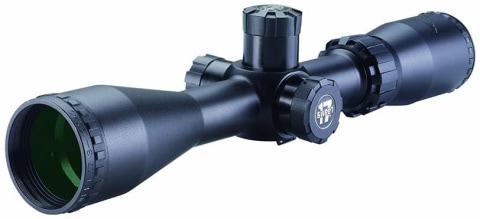
Here’s something we forgot to tell you: When brands manufacture scopes, they always try to make them compatible with every firearm out there. And that’s why you’ll find some devices underperforming once mounted. Not the BSA 3-12X40 Sweet 17 Rifle Scope, though. We know for sure this particular optic was made for a 17 HMR rifle because even the turrets are specifically calibrated for .17HMR 17gr. and .20gr Bullets
The finish is black matte. Some people think surfaces that have this color are boring, but we think otherwise. We wouldn’t go for something that’s shiny or flashy because we know scopes are often affected by light reflections. That flat, dull, satin-smooth finish is perfect for us.
How durable is it? Very. It’s an aluminum construction, and you don’t have to be told how strong that material is. The fact that it’s a 1-inch tube is again all the confirmation that you need, as a Doubting Thomas.
BSA 3-12X40 Sweet 17 Rifle Scope is a 3-12x variable scope with a 40mm diameter objective lens. In other words, it offers versatility and allows in sufficient light. The lenses are also fully multi-coated, validating what we already knew—it’s scratch resistant, water resistant, and… not affected by light reflections.
The ¼-minute click adjustments together with the 30/30 reticle will help you deliver accurate shots, and the 4” eye relief will prevent scope eye.
If someone walked up to us and told us they didn’t really feel this scope, we wouldn’t know why. But after testing it, we think it might because the turrets are soft. It wasn’t such a deal break to us, but we can’t speak for everybody else.
- Calibrated for .17HMR 17gr. and .20gr Bullets
- Black matte finish
- 4” eye relief
- An aluminum construction
- 1” inch tube
- Fully multi-coated
- 40mm diameter objective lens
- 3-12x variable scope
- 30/30 reticle type
- ¼-minute click adjustments
- The turrets are soft
5. BARSKA 6-18×40 mm AO Hot Magnum
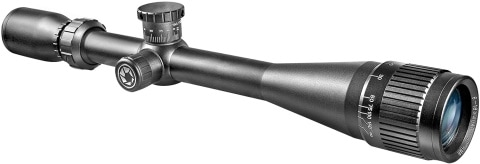
At the risk of sounding like a salesperson, we’re just going to go ahead and ask this: Are you looking for an optical sighting device that comes with a magnification range of 6-18x and provides the versatility required to test one’s limits? Well then, you’ve got to check out the BARSKA 6-18×40 mm AO Hot Magnum.
Seriously though, you have to check it out. You see, besides that decent magnification range, Barska also incorporated a bullet drop technology that already has a pre-calculated trajectory compensation for any range.
Did you ask about the lenses? Because they too contribute a lot, seeing as they have multiple layers of coatings. There’s the hydro-coating responsible for waterproofing the surface, the anti-reflective coating that takes care of light reflection, the hard coating that protects it from scratches, and even the UV coating that protects the users from UV rays.
The turrets are interchangeable. So, if you’re bored with the 17-caliber rounds, you can switch to the 22-caliber rounds. And vice versa.
Regrettably, the field of view is limited with this scope. That’s why we had it listed at the bottom half of our list. At 100 yards, you’ll only get 14.5 feet as the FOV and 4.5 feet at maximum magnification. The other problem is in the eye relief. Barska only provided 3.1 inches.
- Anti-reflective coating
- Magnification range of 6-18x
- Protects the users from UV rays
- Scratchproof
- Turrets are interchangeable
- Hydro-coating for waterproofing the lens
- Bullet drop technology
- Limited field of view
- 1-inch eye relief
6. Gamo BSA Optics Sweet 17 AO 3-9 X 40mm Rifle Scope
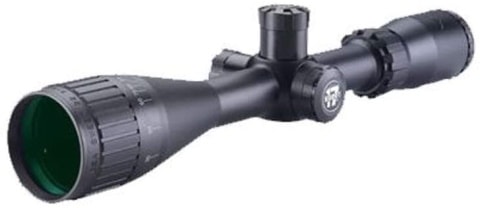
The AO is all you need to know this scope won’t be affected by parallax. AO means adjustable objective, and this feature is instrumental in correcting parallax at long ranges—Parallax is set at 7.5 to infinity.
And the lens is 40mm. Not too small to limit the amount of light that passes through, and not too large that it compromises the balance of the rifle.
This beauty will come with the standard with 2pc dovetail rings, and anti-reflective glass lenses that are fully coated. The click value increments are ¼ MOA, and that’s how we know it’s primed to offer precision and accuracy.
To answer the question of whether it can withstand the test of time, it’s a single piece tube, made of aluminum. One of the lightest and strongest materials out there.
The BSA Optics Sweet 17 AO 3-9 X 40mm is a variable optic that has a 3-9x magnification range. At a low power, you’ll be working with a 34.2 FOV, and 11.5 FOV at the maximum magnification.
Its reticle is the 30/30 type, and it’s also waterproof, fog-proof, and shockproof. But before you invest your hard-earned money into this scope, we feel obligated to tell you it doesn’t hold zero that well.
- Anti-reflective glass lenses
- Single-piece tube
- 30/30 reticle type
- 3-9x magnification range
- Parallax set at 7.5 to infinity
- 2-11.5 FOV
- Aluminum housing
- Objective lens diameter of 40mm
- Waterproof, fog-proof, and shockproof
- Standard 2pc dovetail rings
- Doesn’t hold zero
7. Bushnell Banner Dusk & Dawn Multi-X BDC Riflescope
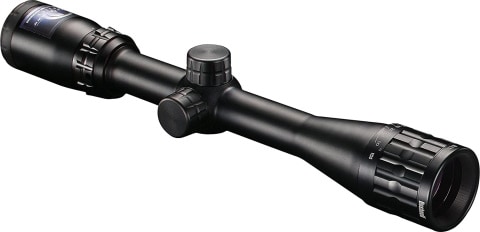
Bushnell designed this scope for users looking to hunt very early in the morning or late in the evening. They also made sure it could deliver when paired with .17 or .22 HMR rifles. With a tube diameter that measures 25.4mm wide, and an objective lens that’s 36mm, this 3.5-10x magnification optic only weighs 16.4 ounces.
Other awesome features that help define it as a top tier scope include its shock-proofing, fog-proofing, and waterproofing construction. And since it’s O-ring sealed, it will always remain dry whenever it’s submerged in water.
The multi-coated lenses are made of quality glass material, so they know what they’ve got to do to guarantee clarity, especially in a low light condition. Its reticle is the Multi-X reticle—the type that starts with thicker lines and thins out as it approaches the center of the circle.
We forgot to mention that the 100-yard field of view at your minimum magnification will be 30 feet and 10.4 feet at maximum. The eye relief is incredible, as well. You’ll be working with 3.3 inches, and a fast-focus eyepiece.
We feel sad to say this, but resetting the turrets to zero is no walk in the park. You’ll probably need something sharp to help you with the adjustment.
- Perfect low light instrument
- Calibrated for .17 and .22 HMR rifles
- Multi-coated lenses
- 4mm wide tube diameter
- Multi-X reticle
- 36mm objective lens
- Weighs 16.4 ounces
- Shock-proofing, fog-proofing, and waterproofing construction
- 5-10x magnification optic
- 30-10.4 FOV
- O-ring sealed
- Fast-focus eyepiece
- 3-inch eye relief
- Difficult to resetting turrets to zero

Buyer’s Guide – How to Choose the Best Scopes For 17 HMR Rifles
You know, the primary goal of this article piece was to review the top tier scopes for a .17 HMR rifle. Therefore, we want to break it down, by talking about the standard features and specifications. We’ll start by defining them, and then move on to why it’s important for an optical sighting device to come with one.
We’ll also look into the unique features. Not the ones that are there to make the optic look aesthetically pleasing, but the kind that will give it an edge over its competitors. Okay, without wasting more time, let’s get this ball rolling.
Magnification
There’s no right or wrong magnification spec, as your choice will be dependent on your needs. While shopping for rifles with magnification in mind, we normally focus on four things: the target size, target distance, light conditions, and its ability to track moving targets.

Target Size
It’s imperative to always remember what exactly a scope’s magnification means, before making a purchase. It’s simply the ratio of the target’s image to its size, at a pre-established distance. It would be foolish to assume that the magnification of a user hunting rabbits will automatically be similar to that of one tracking elks. The former will make you think the rabbit is within touching distance, while the latter will be lost in the elk’s mantle.
Target Range
The target distance or range is yet another aspect of the equation. Typically, targets that are yards away are usually larger targets. Meaning, you’ll be required to find a balance between a high magnification that can bring the object closer, and that which will help you maintain a reasonable field of view.
Light Conditions

Where will you be using the scope? In a low light condition? Well, if that’s the case, you’ll need a lower magnification scope. And here’s why:
The lenses that provide higher magnification are often more curved. But there’s something they don’t tell you. You see, the more the curve the thicker the lens. And the thicker the lens, the dimmer the images. That’s due to the fact that most of the light that tries to enter the scope is usually blocked from reaching the user’s eye.
By the way, this also explains why variable scopes still produce dimmer images at lower magnification. A variable scope will have a magnification description that looks like this: 3-9x. 3x is the minimum power, and the adjustments can be made all the way up to 9x.
A fixed scope, on the other hand, will appear like this: 4x. It’s sometimes referred to as a non-adjusted optic because it doesn’t offer any other magnification save for that. Even though 4x is higher than 3x, the images will still be brighter than those created by 3x. Reason being, the variable scope still relies on the same lenses that provide a higher magnification.
Tracking Moving Targets

There’s a direct correlation between magnification and a scope’s field of view. Your field of view will be that area that’s visible through your sight. The higher the magnification, the narrower the field of view. And that translates to less light being reflected off the object, and into the device.
A moving target will need a wider field of view. If the view is too narrow, you’ll keep losing the target, and experience difficulties picking it up once more.
Reticles
The word reticle was derived from the latin word reticulum, which means net. It refers to the markings or fine lines that are usually built into a scope’s eyepiece, and look like a net. Some people say it’s Robert Hooke who invented the first reticle, while others think it’s William Gascoigne. So, we don’t really know for sure, but we appreciate the invention nonetheless.
The Original Reticle
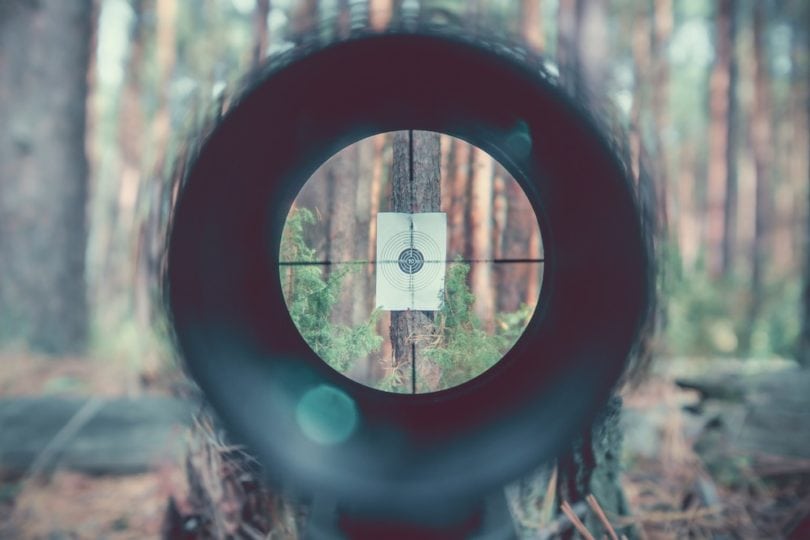
It was nothing more than a feature that created an aiming point at the center of the eyepiece. The horizontal and vertical lines were fine in nature, and they were commonly referred to as crosshairs.
Dot Reticle
It’s slightly advanced in comparison to the original reticle, and often based on a traditional shooter’s dot. The first thing that you’ll take a note of once you look through the device’s eyepiece is an enclosed circle, with a dot smack in the middle. And that dot right there is what serves as an aiming point.
BDC Reticle
BDC is an abbreviation for Bullet Drop Compensation. This reticle is different in that it comes with extra markings right under the crosshair’s center. The markings will either be circles, the traditional lines, or chevrons. And they are there to help the user estimate the bullet drop at a predetermined yardage.
Duplex Reticle
In this reticle, the crosshairs will start out thick and thin out as they move towards the center of the circle. The thick part is to provide the user with a quick target acquisition, and the thin part is meant to boost precision and accuracy.
Mildot Reticle
The Mildot reticle is just the duplex reticle, but with a more advanced technology. There will be tiny milliradian dots on both the horizontal and vertical axes, and they are supposed to act as guide or sort of measurement.
We don’t know if you were aware of this, but a single Mrad is equal to 3.6 inches. And each dot on the reticle will represent 1 Mrad at 100 yards. To equate that to 1000 yards, all you’ve got to do is multiply the 3.6 inches by 10. Which will be equal to 36 inches.
All that math is the reason why Mil Dot reticles are specifically designed for long distance shooters and snipers.
Illuminated Reticle
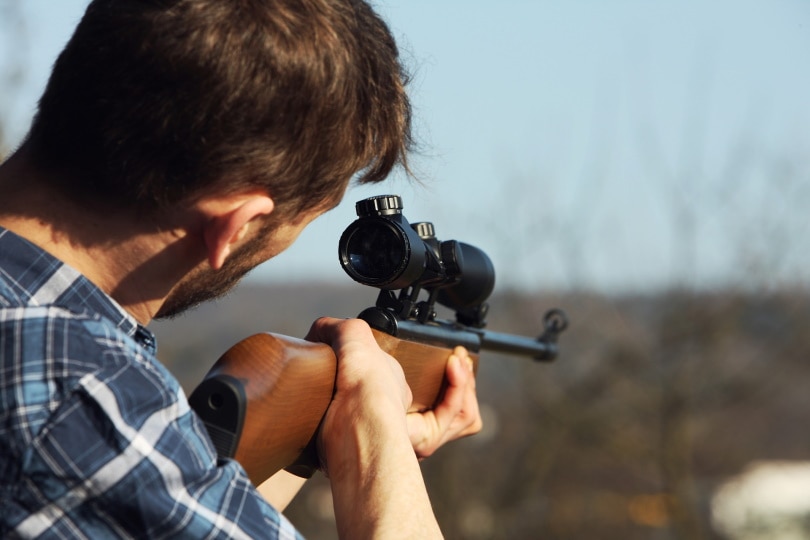
Any type of reticle that can be illuminated will be referred to as an illuminated reticle. So it can be a duplex illuminated reticle, or even a BDC illuminated reticle. “Illuminated” means it provides light needed by a user who’s operating in darkness, or low light conditions. They are usually powered by power cells, or could be one of the features in a fiber optic scope.
Objective Lens
Aside from magnification, this is the other feature that will have a huge impact on your lighting. Principally, the larger the diameter, the more the light allowed into the scope. Thus, making your vision and shots clearer.
For the record, good quality lighting is just good quality lighting. It has nothing to do with adequate lighting. Also, there’s nothing like lighting that’s more important, or that which is less important, depending on the shooting range.
A quality scope will be able to produce crisp, bright images even in low light conditions. And that’s primarily because it will come with an objective lens that’s large enough to let in sufficient quality light.
For matters clarification, you should know the phrase ‘low light conditions’ is being used to refer to dusk or dawn. We’re not talking about pitch-black environments—Even though it’s true that some scopes can still deliver in such conditions.
What’s the recommended objective lens diameter?
The smallest diameter that we’ve ever come across was 20mm. That largest, 72mm. But we prefer working with one that measures 44mm. If you keep on going higher than that, you’ll not only affect the scope-eye-alignment, but also the general weight of the rifle.
And here’s a friendly reminder: Always pick an optical sighting device that comes with multiple coatings on all air to glass surfaces. Coatings usually have a way of boosting a scopes performance, and protecting it.

Price
We’ve already established that good quality scopes normally come with unique features, in addition to the standard ones. That’s why their price tags are almost always discouraging. But we do have a rule of thumb in this business. It goes like this:
The price of a quality scope should be half the price of the firearm on which it’s going to be mounted on. So, if it’s a simple firearm, you’ll have to choose a simple scope. If it’s a tactical one, ditto.

Conclusion
We hope this article will help you narrow down your choices when you finally decided to go get a scope for your .17 HMR rifle. And if we were you, we would first try out the Simmons Whitetail Riflescope, which is our top pick. The OTW 3-9X56 Rifle Scope is an ideal scope for frugal spenders, while the Hawke Vantage IR 4-12×40 AO Riflescope is the perfect fit for those willing to invest an arm and leg just to secure a quality scope.
You might also be interested in: How to Sight in a Rifle Scope Without a Boresighter
Featured Image Credit: OTW, Amazon
Table of Contents
- A Quick Comparison of our Favorites
- The 7 Best Scopes For 17 HMR Rifles
- 1. Simmons Whitetail Riflescope – Best Overall
- 2. OTW 3-9X56 Rifle Scope– Best Value
- 3. Hawke Vantage IR 4-12×40 AO Riflescope– Premium Choice
- 4. BSA 3-12X40 Sweet 17 Rifle Scope
- 5. BARSKA 6-18×40 mm AO Hot Magnum
- 6. Gamo BSA Optics Sweet 17 AO 3-9 X 40mm Rifle Scope
- 7. Bushnell Banner Dusk & Dawn Multi-X BDC Riflescope
- Buyer’s Guide – How to Choose the Best Scopes For 17 HMR Rifles
- Magnification
- Target Size
- Target Range
- Light Conditions
- Tracking Moving Targets
- Reticles
- Objective Lens
- Price
- Conclusion
About the Author Robert Sparks
Robert’s obsession with all things optical started early in life, when his optician father would bring home prototypes for Robert to play with. Nowadays, Robert is dedicated to helping others find the right optics for their needs. His hobbies include astronomy, astrophysics, and model building. Originally from Newark, NJ, he resides in Santa Fe, New Mexico, where the nighttime skies are filled with glittering stars.
Related Articles:
What Is the Best Binocular Magnification for Hunting? Optical Features Explained
How to Clean a Refractor Telescope: Step-by-Step Guide
How to Clean a Telescope Eyepiece: Step-by-Step Guide
How to Clean a Rifle Scope: 8 Expert Tips
Monocular vs Telescope: Differences Explained (With Pictures)
What Is a Monocular Used For? 8 Common Functions
How to Clean a Telescope Mirror: 8 Expert Tips
Brightfield vs Phase Contrast Microscopy: The Differences Explained



